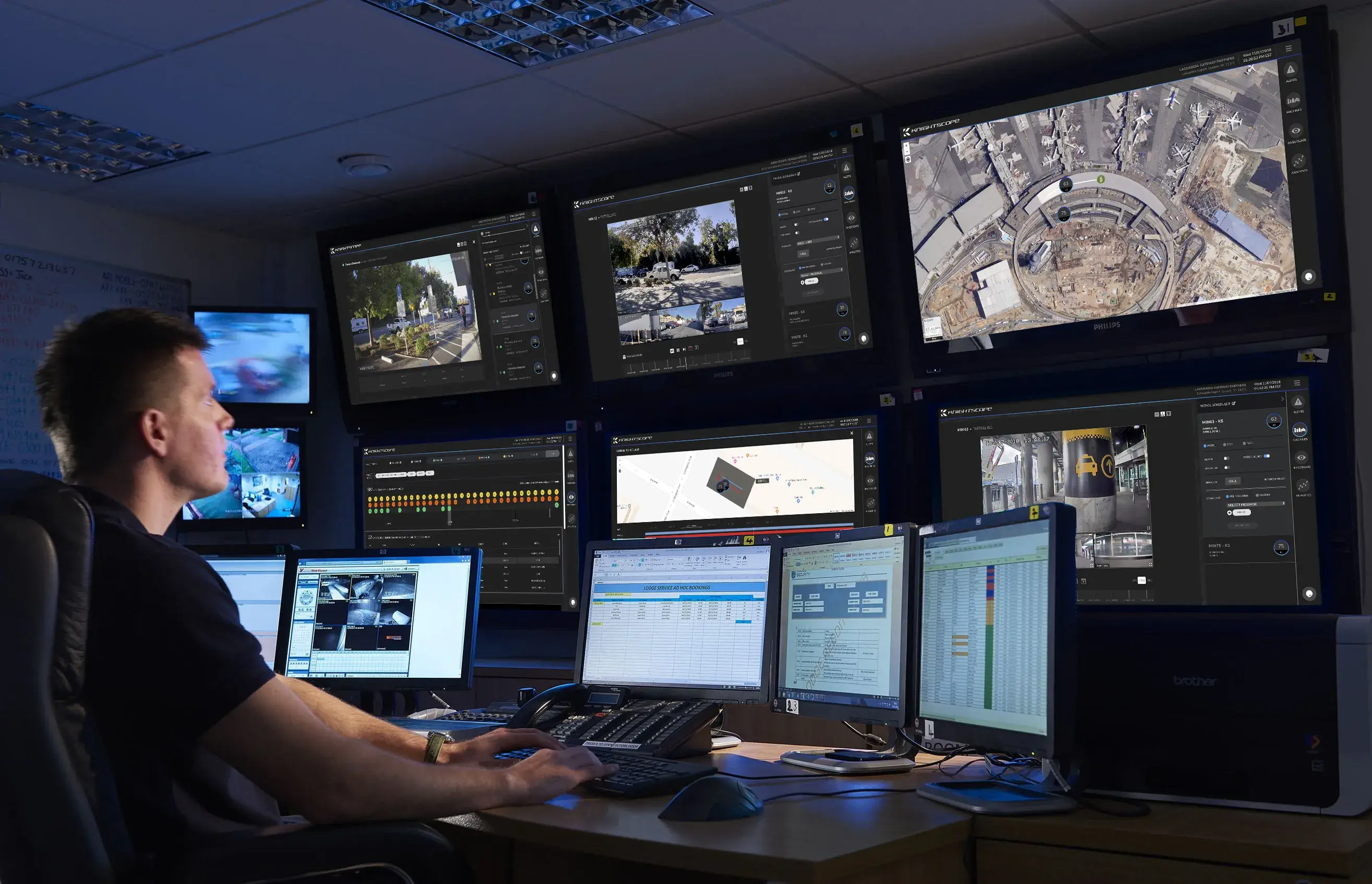
Picture this: a Chief Security Officer wakes up at 7 a.m. to 10,000+ alerts on his or her phone. That’s not rare — it’s business as usual for a lot of organizations trying to keep tabs on physical security.
The problem isn’t a lack of technology. It’s that most security teams are drowning in it. Between rising threats, limited budgets, and constant staff turnover, security leaders are stuck choosing between cutting corners or burning out their teams. When there’s no incident, security is the first thing to get defunded. When something does happen, it turns into a blank-check scramble to fix it.
And then there’s alert fatigue. When your system flags everything — a shadow, a stray dog, a person walking by — real threats get buried in the noise. It’s a boy-who-cried-wolf situation at scale.
Meet the human-machine security hybrid

Knightscope didn’t just tweak a process — we built a whole new department to fix what’s broken in remote monitoring.
RTX (short for Risk and Threat Exposure) is a full-service monitoring team that handles what most clients can’t: reviewing every alert, filtering out the noise, and responding fast when something actually needs attention.
It’s not just software, and it’s not just hardware. RTX blends the power of autonomous robots with real human oversight. The bots do the patrolling; the RTX team handles judgment calls, broadcasts warnings, and makes the right people aware — fast.
If you run security at your property, RTX is for you
RTX is built for anyone stuck trying to stretch a security budget without compromising safety. That includes:
-
Property managers who oversee large facilities or campuses
-
Security directors under pressure to cut costs but reduce liability
-
Operations or IT managers who can’t keep up with alerts
-
Executives responsible for safety, reputation, and compliance
If you're responsible for a security program and you’re trying to improve safety while still spending efficiently — RTX is for you.
From robot patrols to human review: how RTX covers your site 24/7
Here’s what you get with RTX:
-
Live alert triage: Every alert is reviewed by a trained analyst in real time. No auto-clear. No blind trust in AI.
-
Daily visibility: Clients get two activity reports a day — a morning rundown and an end-of-day summary.
-
Patrol coverage: The team runs 12 to 24 virtual patrols per site, per day, separate from alerts.
-
Rapid response: Average incident turnaround is 2 hours and dropping. (Most of the industry takes days.)
-
Monitor with precision: see your robot fleet in real time with KSOC, a web dashboard included with every subscription.
Advanced intervention tools:
-
Emergency communications to local law enforcement groups
-
Audio incident intervention, including machine patrol stop & restart
-
Virtual tours for anomaly detection
-
Remote monitoring of your existing Video Management System (VMS)
And when something real happens? The team escalates to the right people — your on-site security, law enforcement, or both.
Smart spending on security shouldn’t mean cutting corners
Let’s clear up a few common misconceptions right now:
“RTX replaces human guards.”
Reality: It lets you reallocate them.
The goal isn’t to eliminate humans — it’s to stop wasting their skills. Take the overnight shift, for example. It's a job nobody wants, where guards are expected to stay alert in near silence for eight hours straight. Humans aren’t built for that, and the result is predictable: low morale, high turnover, and missed incidents.
With RTX, robots handle that shift without blinking. They patrol tirelessly, detect movement, and escalate threats automatically. Meanwhile, human staff can shift to daytime roles where their presence actually makes a difference — like greeting visitors, managing access points, or investigating active incidents. You’re not replacing people. You’re making your team stronger by putting them in the right places.
“It’s just another outsourced service.”
Reality: RTX is built entirely in-house — and it shows.
Most security vendors treat remote monitoring like an afterthought. They assign it to whoever’s available — a scheduler, a dispatcher, someone already juggling five other responsibilities. Communication is minimal. And if you want reports, customization, or real engagement? That usually comes with an upcharge.
RTX does the opposite. This is a dedicated department. Every team member is trained to support specific sites and follow specific post orders. They send two detailed reports per day, proactively update clients during investigations, and even adjust alert thresholds based on client feedback. One client described the service as “almost too responsive.” That’s not a complaint — that’s the bar.
“It’s cheaper, so it must be lower quality.”
Reality: It’s smarter spending — not corner-cutting.
Human guards can cost anywhere from $22 to $50 an hour depending on region, vendor, and shift. RTX, which combines robot patrols with live human oversight, typically comes in around $9 to $11 an hour. The difference isn’t because Knightscope cut corners — it’s because we cut out the inefficiencies.
RTX monitors more consistently than humans ever could, clears more alerts than most remote vendors even attempt, and responds faster than traditional security teams. Meanwhile, false positives get filtered out before they waste anyone’s time, and genuine threats are dealt with quickly — often before anything escalates.
So yes, it’s cheaper. But it’s also faster, more consistent, and more scalable.
RTX customers stick around (and the security team does too)
RTX has kept 100% of its clients since launch. Why? Clear communication, fast response times, and service that feels personal. Clients don’t wait days for reports — they get updates within hours.
Behind the scenes, the RTX team is just as stable. These are seasoned security pros who’ve stayed put in an industry known for 40–70% turnover.
They’re engaged, responsive, and trained on each site they support. That consistency shows up in uptime, incident response, and client trust.
Ready to rethink remote security?
Getting started with RTX is simple: deployment takes about a week, and our team tailors the service to your site from day one. You’ll get more oversight, less noise, and a crew that acts like an extension of your own.
Put simply? You get more security, better coverage, and faster response — all for less money.
Want to see what that looks like for your property or program? Chat with us and we’ll walk you through it.
 Knightscope
Knightscope